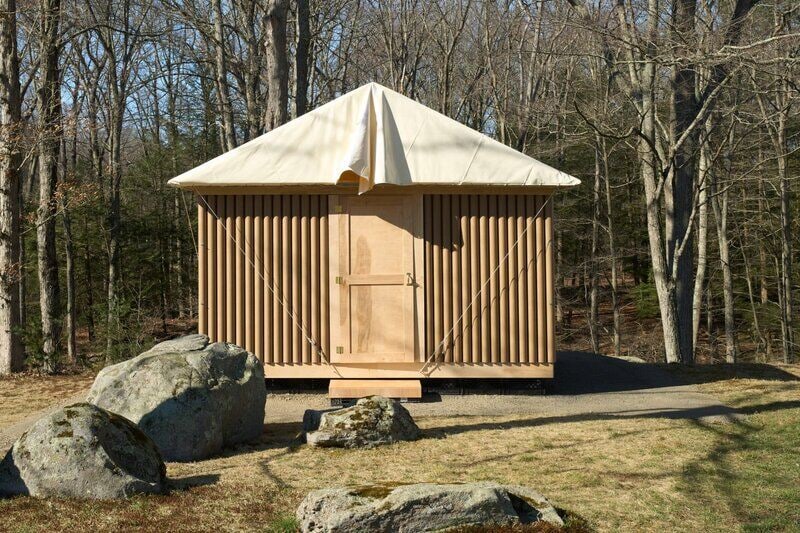
Shigeru Ban Introduces the Paper Log House in the Glass House
Amy Duong — April 18, 2024 — Art & Design
References: dezeen
Japanese architect Shigeru Ban designs the Paper Log House using paper tubes, milk crates, and wood. It honors the 75th anniversary of the Glass House by architect Philip Johnson. It is located in Connecticut, USA, and done with the help of students at NYU's Cooper Union. The home is built on the site of the historic Glass House which was formed in 1949 originally as Johnson's own home. The Paper Log House is developed and built on the location to contrast the original home.
The Glass House executive director Kirsten Reoch speaks about the design, stating "When the Glass House and Brick House were completed in 1949, Philip Johnson was just at the beginning of what would become an expansive campus filled with structures that continually pushed boundaries in design and materials over the course of more than 50 years. The Paper Log House continues this ethos of experimentation and innovation, turning Ban's creative energy toward the solution of urgent social problems with recyclable and easily available materials."
Image Credit: Michael Biondo
The Glass House executive director Kirsten Reoch speaks about the design, stating "When the Glass House and Brick House were completed in 1949, Philip Johnson was just at the beginning of what would become an expansive campus filled with structures that continually pushed boundaries in design and materials over the course of more than 50 years. The Paper Log House continues this ethos of experimentation and innovation, turning Ban's creative energy toward the solution of urgent social problems with recyclable and easily available materials."
Image Credit: Michael Biondo
Trend Themes
1. Sustainable Materials Innovation - Exploring the use of paper tubes and milk crates in architectural design to address urgent social problems.
2. Student-led Collaborative Design - Engaging students in building projects to foster innovation and creativity in architecture.
3. Historical Site Revitalization - Reimagining historic locations with modern sustainable housing solutions to honor architectural legacies.
Industry Implications
1. Architecture - Increasing focus on sustainable design practices using unconventional materials for eco-friendly structures.
2. Education - Integrating hands-on projects into architectural curriculum to encourage innovation and problem-solving skills.
3. Real Estate Development - Exploring opportunities to repurpose historical sites with sustainable housing solutions to attract environmentally-conscious buyers.
3.4
Score
Popularity
Activity
Freshness























